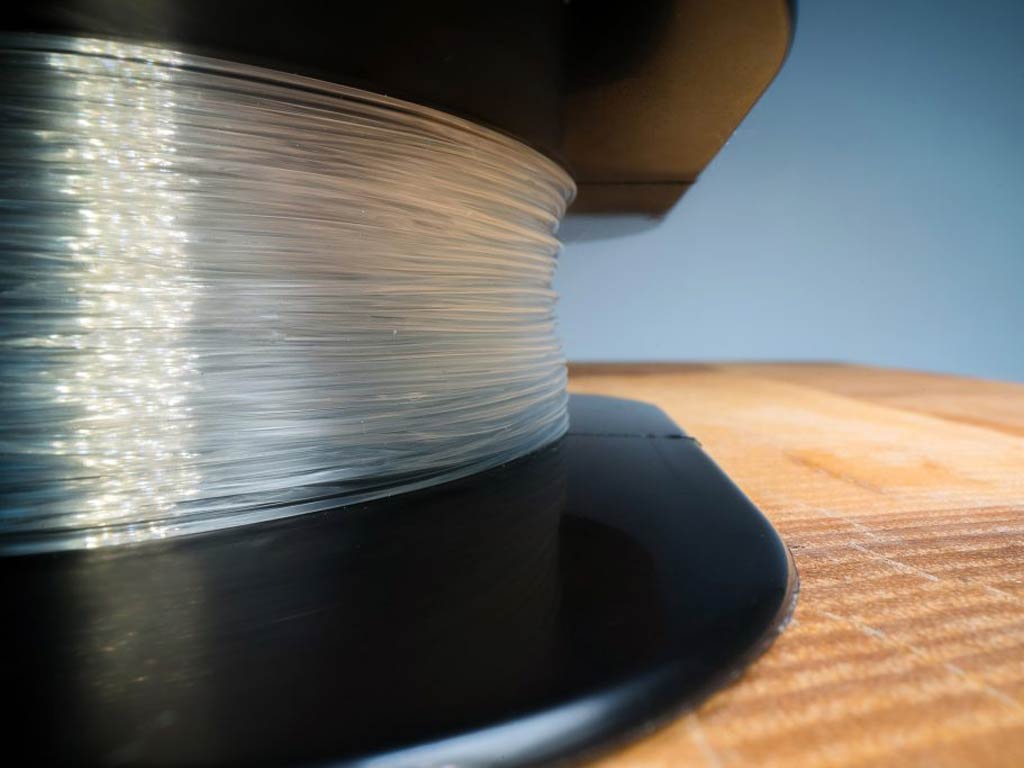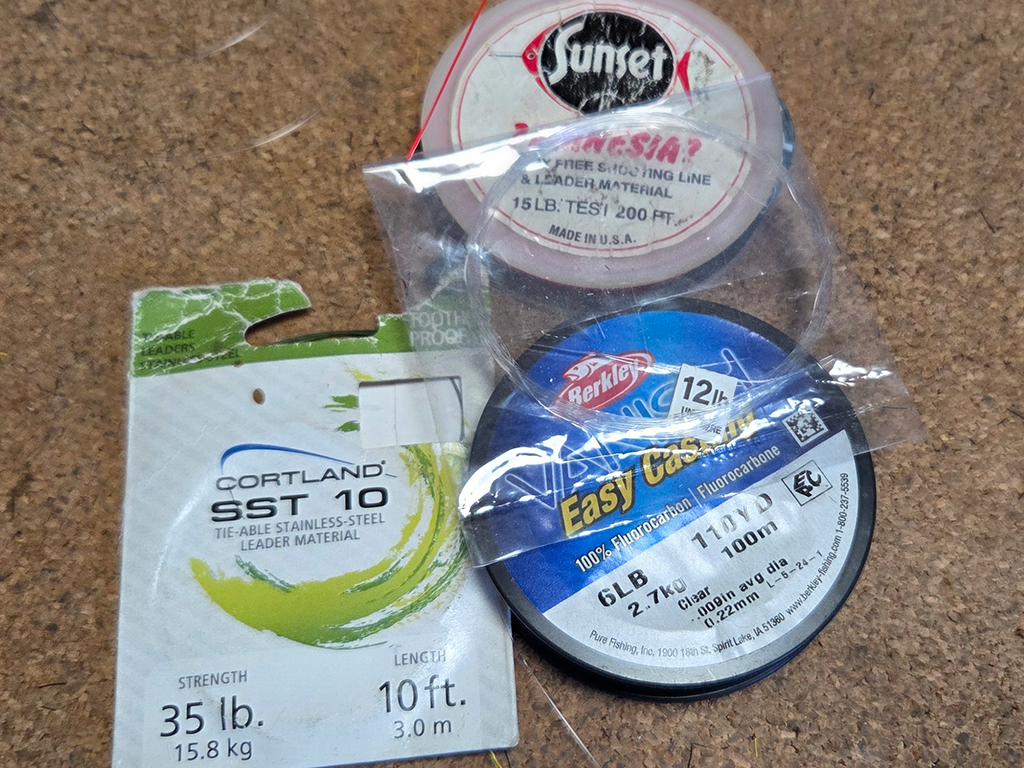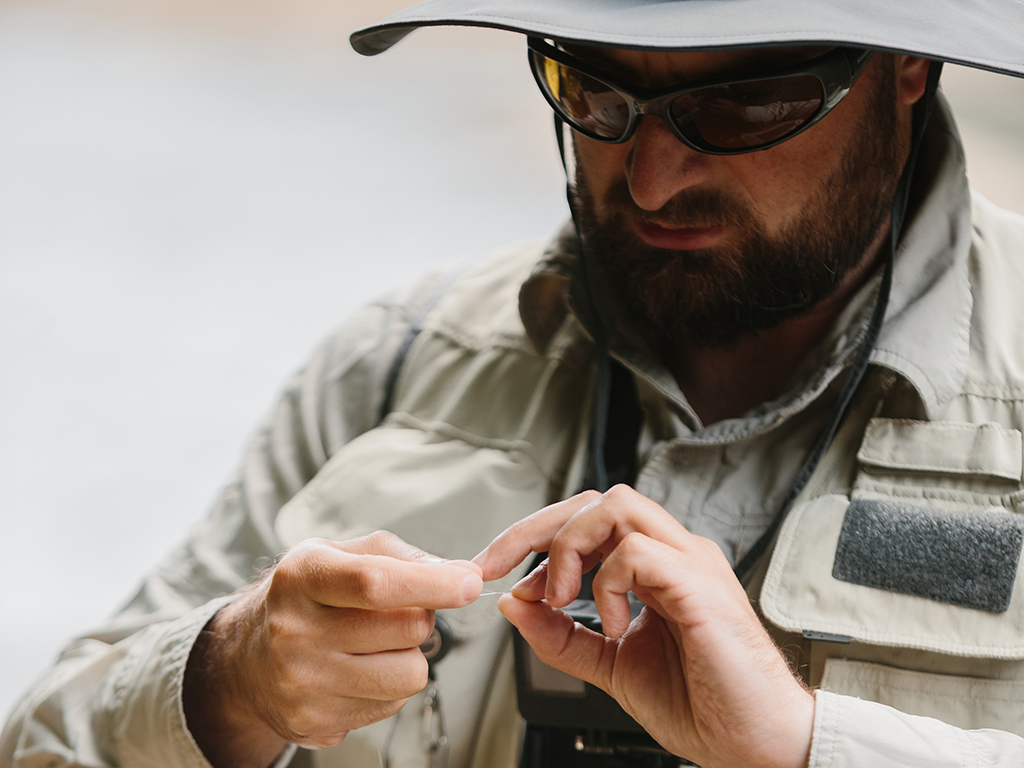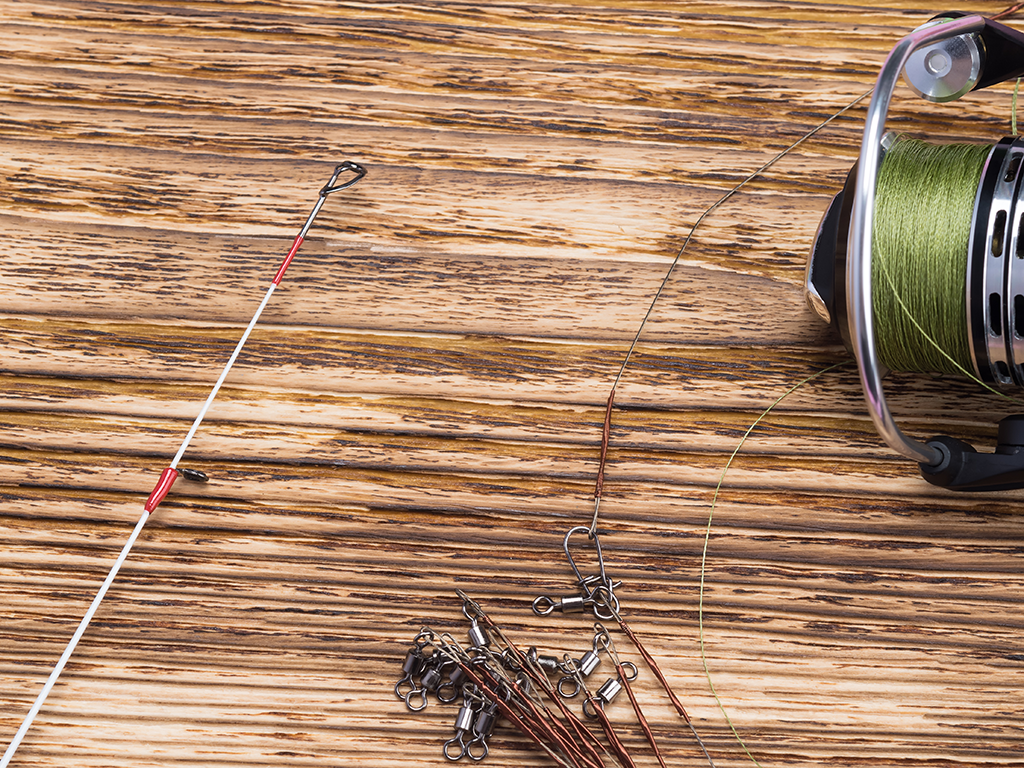Fishing lines are important, but it’s the leaders that really determine performance and how your rig will fish. While you can skip the leader and tie a lure directly to the line, using a leader offers far more flexibility in how you rig while allowing for more control of performance.

Read on to learn about leaders and why they’re a critical piece of your fishing setup. I’ll run you through all the basics and give you some personal insights from my experience on the water. Let’s dive in!
What is a fishing leader?
Fishing leaders are a section of line tied between your main line and terminal tackle, lure, or fly. The leader is a transition from the line to the hook that’s used to assist with casting – and in some cases, to determine presentation.
Anglers can use leaders to prevent severing on sharp teeth or rocks. You can also use leaders to rig multiple hooks and to customize attachments for weights and other tackle. Lastly, the leader preserves the main line, as it’s replaceable.
Rigging some leaders is very simple, while others are quite difficult. It all depends on the style of fishing and what you want to accomplish. Regardless, you’ll need to tie excellent knots and use a leader formula to achieve the desired result.
Best Fishing Leader Materials
Before I jump into types of leaders and rigging styles, it’s important to understand the materials. The main line can be a fly line, monofilament line, fluorocarbon line, or a braided line. Regardless of the primary line, though, the actual material of your fishing leader can be any of the following.
Monofilament

This is a common leader choice for strength, because it casts smoothly while offering great abrasion resistance. I use it often in saltwater and when I need a heavier leader. It’s perfect for rigging 30 lb or greater tests, but also works well in smaller sizes.
Fluorocarbon

If visibility is a concern, consider a fluorocarbon fishing leader. I use the material often for fly fishing leaders and for my conventional Trout leaders. You can connect fluorocarbon to monofilament if needed as well. I tend to use one or the other, however. Fluorocarbon is fantastic for light and heavy leader, but I tend to favor the softness of monofilament when building extra-heavy leaders for big game.
Wire

In special circumstances, wire leaders are necessary. Toothy fish like Pike and Musky are especially hard on leaders, and wire will prevent them from severing the line. You can find wire fishing leaders that are pre-rigged with swivels and clips, making it easy to tie on and start fishing. These tend to have more stiffness than wire material made for tying in knots. The flexible wire is really nice for custom leader rigs and knotting to mono or fluorocarbon.
How to Rig a Fishing Leader
There are endless ways to rig a leader and many are species- and environment-specific. You can even get creative and play with different setups for unique leaders! Personally, I think learning a few basic leader setups and rigging them with bulletproof knots is the key to building high-performance leaders.
Tapered Leader to Tippet

This is the standard for fly fishing, and tapered leaders are sold pre-made. You can always make your own by stepping down tippet sizes, however. For example, 20-pound at the butt to 15-pound, to 10-pound, to 6-pound will cover a standard Trout leader. Lengths typically run 7 to 9 feet. The taper helps to turn over flies, which are often light or weightless.
Straight Leader
Running a straight fishing leader is great for a number of conventional and fly casting situations. For flies, a 4–5 foot section of monofilament or fluorocarbon is great on streamer rigs. For any conventional gear, running a straight leader of the same length between the main line and swivel or hook is excellent. I like an Albright knot for mono to braided line connections in this situation.
Weighted Searching Leader

Whether you’re bottom bouncing or suspending bait, a simple sliding weight with a few additions makes for a great leader setup. Add a short section of monofilament to the end of your line with a sliding weight. Next, add a bead to protect the knot that ties to your swivel (next in line). Add another section of monofilament at the length you want to fish above the bottom. Tie the end of this to your hook.
Utilizing a Tag End
The number of ways to rig a leader is immense, but I prefer keeping it simple. Fewer knots mean you have fewer points of potential failure. At times, using the tag end of a knot is very useful, however. At the end of your leader, use a blood or surgeon’s knot to add another foot or two of leader material. Leave the tag end on the knot that connects to the main leader section and clip the remaining tag end. With the tag, you can tie on a sinker or second hook.
Fishing Leader Knots to Learn

A few knots are critical for tying leaders. Rather than learning a ton of different knots, I favor the idea of learning to tie a few very well. All of these have alternatives you can choose but these are some of my go-to knots for building leaders. Practice them at home so you can put them to use in the field.
- Albright Knot. Use this ultra-strong knot for connecting braided lines to monofilament or fluorocarbon leaders.
- Nail Knot. Once tied on a nail or toothpick, tools now exist to make this knot much easier. Use it for connecting your leader to the fly line if a loop-to-loop option does not exist.
- Surgeon’s Knot. A simple double overhand knot makes it easy to connect the tippet to the leader. Luckily, this is one of the easier knots to learn.
- Blood Knot. This knot serves the same purpose as the surgeon’s knot, but it’s a bit stronger and works better with lines of different diameter.
- Uni Knot. You can choose an improved clinch knot as well, but I prefer the extra strength offered by the uni knot for tying to swivels and the hook eye.
- Palomar Knot. Also used for tying to hooks and swivels, this is a proven favorite for all line types.
Fishing Leaders FAQs
Don’t Skip Over the Importance of Your Leader!

While many anglers may be tempted to tie on a lure and get busy fishing, the leader is something to give your attention to. I like to rig and prepare leaders ahead of a fishing trip so they are tied and ready to add to my line. This saves time on the water and reduces the need to tie knots in the field. I suggest you follow my lead and get out there!
How do you rig your leaders for conventional or fly fishing? We’d love to hear about your favorite formulas in the comments below!
